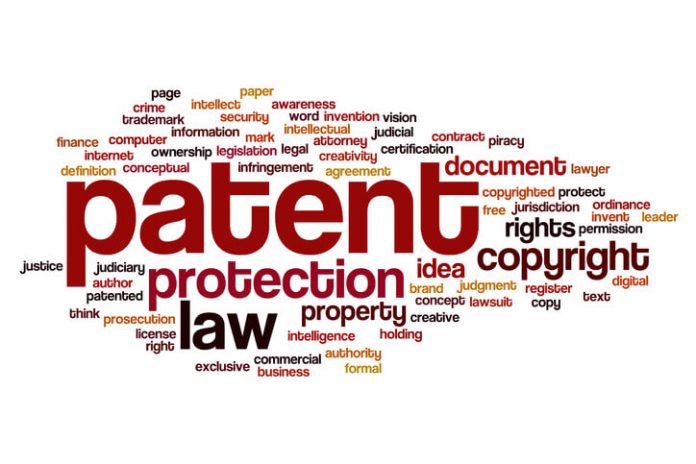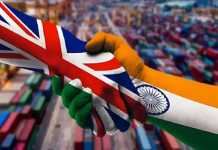This article is written by Aishwarya Parameshwaran, pursuing Diploma in Intellectual Property, Media and Entertainment Laws from LawSikho. The article has been edited by Aatima Bhatia(Associate, LawSikho) and Smriti Katiyar (Associate, LawSikho).
Table of Contents
Introduction
In this evolving world, land and capital are no longer the only assets that are value-creating. The rise of a tech-driven commercial environment has allowed our knowledge, ideas and inventions to generate an economy that is rightly termed as Intellectual Property (IP). IP is mainly divided into two parts: industrial application and copyright. The industrial application includes patents, trademarks and industrial designs.
Patents deal with the protection given to inventors for a product or process patent. Trademarks deal with brand name, logo, slogans etc which build the brand value of a product. And industrial designs deal with the unique designs made for the purpose of industries. In this article, we are going to focus on patents and understand the difference between product patents and process patents.
Introduction to patents
Patents, amongst all assets that fall under intellectual property rights, are mostly sought by industrialists and inventors. The reason is, it gives them a right that restrains others from making, using or manufacturing a product using the same formula or technique. This generally leads to a monopoly right over the product or over the process used to make the product. Such a right lasts for a specified period of time.
In India, the Act which deals with patents is The Patents Act, 1970. The Act specifically lays down the categories that do not fall within its ambit under Sec 3 and Sec 4 of the Act. It also specifies the period for which a right over Patent is protected which is 25 years.
As per the Act, there are two types of Patents that can be acquired in India, namely, product patent and process patent. The Indian legislature implemented these patent regimes as a part of the Patent Amendment 2005.
So in short, we can say that The Patents Act, 1970 gives a statutory right to the inventor for a fixed period of time. This right is granted by the government. Once this patent protection is acquired by the inventor, he is granted the right to stop others from making, using, selling his patented process or product.
Product patent vs process patent
The Indian Patents Act, 1970 provides for two types of patents, they are process and product patents. Let’s discuss each of these types.
Product patent
As the name suggests, this type of patent protects the product. It offers the inventor higher protection for his invention by decreasing the level of competition of the same product. On the other hand, a process patent protects the manufacturing process of a product but not the product. The product patent maximises the level of monopoly and minimizes the competition. So, we can conclude that a product patent has the following features that eventually benefits the inventor or the patent owner:
- It provides a higher level of monopoly rights to the inventor of the patent owner.
- Such a grant prevents others from manufacturing the same product using the same process or a different process.
- Since the end product is given protection, the level of protection is considered higher in comparison with process patents.
Process patent
In this type, patent protection is granted only to a particular process used in manufacturing a product but not the end product. A process patent is often considered to provide limited protection. The reason is, it does not bar or prevent others from manufacturing or creating the same product by using a distinct process. Hence, it is possible that there are multiple process patents granted for a single product. This eventually reduces the monopoly that the inventor enjoys, thereby increasing the level of competition.
How are product and process patents different from each other?
| Sr.No | Basis | Product Patent | Process Patent |
| 1 | Definition | Patent protection is provided to the ‘End Result’ or ‘the product’. | Process patent protection is provided to only the process, and not the resulting ‘End Product’. |
| 2 | Competition | Once protection is granted, less competition | Competition shall remain |
| 3 | Monopoly | A higher level of monopoly is enjoyed by the inventor | Inventors do not enjoy a monopoly since other persons can still manufacture the same product using a different process. |
| 4 | Implementation | Product Patents were introduced as part of the Patents (Amendment) Act, 2005. | Process Patents have been recognised in India ever since the Indian Patent Act, 1970 was enforced. |
| 5 | Example | The altered DNA will be provided protection and not just the process involved. | The patent will be provided to the process involved in altering the DNA as recognised by the Indian Patents Act. |
Take of developed and developing countries on product and process patents
When it comes to product vs process patents, developed countries and developing countries have been shown to possess varied opinions. Whereas developed countries recognise the importance of product patents as complete protection, developing countries have not yet recognised the importance of product patents. This dichotomy has led to hindrance in product protection on a global level as both product and process protection gives protection to patents at different levels.
Since India is a part of WTO, it has agreed to bound itself and to comply with the TRIPS Agreement which came into effect in the year 1999. India adopted the concept of product patent through the 2005 Amendment of the Indian Patents Act.
This Amendment made in 2005 brought two important sections in the Indian Patents Act, namely, Section 2 and 3. Even the definition of ‘Patents’ under Section 2(j) of the Act changed to an invention means a new product or process involving an inventive step and capable of industrial applications.
WTO’s stand on product and process patents
During the Uruguay Round of Talks, the World Trade Organization (WTO) codified an agreement that intended to create and recognise an equitable system for international trade. It was felt that it was the need of the hour to protect products exported of intangible assets through strong and powerful IP Laws.
This led to the TRIPS Agreement which required the ratified countries to comply with terms in order to meet global standards and to resolve hindrances to IP protection that were caused at the global level. One of the requirements specified under the TRIPS Agreement was that all countries that ratified the agreement must follow the Product Patent Regime.
In short, we can say that the TRIPS and WTO intended that the countries shift from process to product patents which would maximise the monopoly right over the patent and reduce the competition in the market.
Analysis of product vs process patents
Evidently, a strict divergence appears to exist between product and process patents regimes. Developed countries are inclined towards the product patent system while the developing country prefers the process patent system. Since the process patent is granted for a particular process and not for the product itself, any other person can produce the same product using a different process by simply modifying the parameters used. This would enable multiple producers to produce the same product. It is a disadvantage for the inventor because the multiplicity of producers in the market shall give him less protection for his patented right and eventually, he wouldn’t have the monopoly and this will give rise to competition in the market.
However, a process patent is a benefit to the consumer of such a product because the customer can get alternative options and can opt for a product that has all the specifications available at an affordable price. The non-existence of monopoly over a product even pressurises the inventor to market the product at a lower cost which makes it cost-effective to the consumer of such product.
In the case of a product patent, the exclusive right is given to the original inventor of a product. Once this type of patent is granted, no other person can make, use or manufacture the same product. Since there would be a monopoly over the product, the inventor would stand to benefit since he can market the product at the price he desires. However, it would be a disadvantage for the consumer since the price of such a product would be high and the consumer who has no other alternative option will now be forced to buy the product at the rate decided by the inventor as his exclusive right.
Conclusion
Now that we have understood the various factors which differentiate product patents from process patents and the advantages and disadvantages of both, we can conclude why the developing countries and developed countries have different stances.
Maybe developing countries have not yet completely shifted to product patents because this will eventually affect their nation and consumers who aren’t financially strong on a global level yet. Granting process patents would help such countries to increase innovation in their economy, and would promote healthy and effective pricing of the product. India, being a developing nation is also in favour of granting both process and product patents and is not inclined towards product patents. The reason is, the government at the end of the day needs to implement laws only after analysing and understanding the plight of the country and not by blindly following the developed countries.
References
- https://www.quickcompany.in/articles/difference-between-the-product-and-process-patent-regimes
- https://www.indianeconomy.net/splclassroom/what-is-the-difference-between-product-patent-and-process-patent/
- https://yourpatentteam.com/hrf_faq/difference-between-product-and-process-patent/
Students of Lawsikho courses regularly produce writing assignments and work on practical exercises as a part of their coursework and develop themselves in real-life practical skills.
LawSikho has created a telegram group for exchanging legal knowledge, referrals, and various opportunities. You can click on this link and join:
https://t.me/joinchat/J_0YrBa4IBSHdpuTfQO_sA
Follow us on Instagram and subscribe to our YouTube channel for more amazing legal content.
 Serato DJ Crack 2025Serato DJ PRO Crack
Serato DJ Crack 2025Serato DJ PRO Crack











 Allow notifications
Allow notifications


